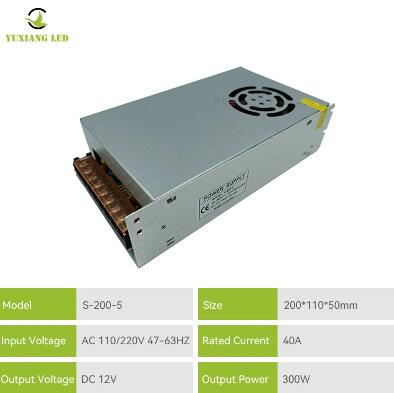Switching Power Supply vs. Linear Power Supply: A Comparative Analysis
2024-08-19
Introduction
When it comes to powering electronic devices, engineers and designers often face a choice between using a switching power supply or a linear power supply. Both types of power supplies have their advantages and disadvantages, and understanding the differences between them is key to selecting the right one for your application. In this blog, we'll compare switching power supplies and linear power supplies, highlighting their key differences, benefits, and drawbacks.
What is a Linear Power Supply?
A linear power supply is one of the simplest types of power supplies, relying on a linear regulator to maintain a constant output voltage. In a linear power supply, the input voltage is typically higher than the desired output voltage, and the excess voltage is dissipated as heat through a series-pass transistor. This method of regulation is straightforward and provides a very clean, low-noise output.
Key Components of a Linear Power Supply
1. Transformer: Steps down the input AC voltage to a lower AC voltage.
2. Rectifier: Converts AC to DC.
3. Filter Capacitors: Smooth out the rectified DC signal.
4. Linear Regulator (Transistor): Maintains a constant output voltage by dissipating excess energy as heat.
Key Differences Between Switching Power Supplies and Linear Power Supplies
1. Efficiency:
- Switching Power Supply: High efficiency, typically 80-90% or more, due to the rapid switching action that minimizes energy loss.
- Linear Power Supply: Lower efficiency, often around 50-60%, because excess voltage is dissipated as heat.
2. Size and Weight:
- Switching Power Supply: Compact and lightweight due to smaller components, made possible by high-frequency operation.
- Linear Power Supply: Larger and heavier because of the need for large transformers and heat sinks to dissipate heat.
3. Heat Generation:
- Switching Power Supply: Generates less heat, reducing the need for extensive cooling systems.
- Linear Power Supply: Generates significant heat, requiring larger heat sinks or cooling mechanisms.
4. Noise and Ripple:
- Switching Power Supply: Can introduce high-frequency noise and ripple into the output due to the rapid switching action. This can be mitigated with proper filtering, but it may still be a concern in sensitive applications.
- Linear Power Supply: Provides a very clean and low-noise output, making it ideal for applications where noise is a critical factor.
5. Complexity and Cost:
- Switching Power Supply: More complex in design, requiring precise control of the switching process. However, advancements in technology have made them more affordable and easier to design.
- Linear Power Supply: Simpler design, often easier to implement, but may require more expensive components (like large transformers) and heat management solutions.
6. Application Suitability:
- Switching Power Supply: Ideal for applications where efficiency, size, and weight are critical, such as in portable devices, consumer electronics, and high-power industrial equipment.
- Linear Power Supply: Best suited for applications requiring low noise and stable output, such as audio equipment, laboratory instruments, and sensitive analog circuits.
Choosing the Right Power Supply for Your Needs
When deciding between a switching power supply and a linear power supply, consider the specific requirements of your application:
- If efficiency, size, and weight are your top priorities, a switching power supply is likely the better choice. These are common in applications like laptops, smartphones, and other portable devices where battery life and compactness are crucial.
- If low noise and precise voltage regulation are more important, a linear power supply might be the way to go. These are often used in audio equipment, test instruments, and other applications where power quality is paramount.
Conclusion
Both switching power supplies and linear power supplies have their strengths and weaknesses, and the choice between them depends largely on the specific needs of your application. Switching power supplies offer high efficiency and compact design, making them suitable for most modern electronics. On the other hand, linear power supplies provide cleaner, low-noise power, making them ideal for sensitive applications. By understanding the key differences between these two types of power supplies, you can make an informed decision that best meets the requirements of your project.



